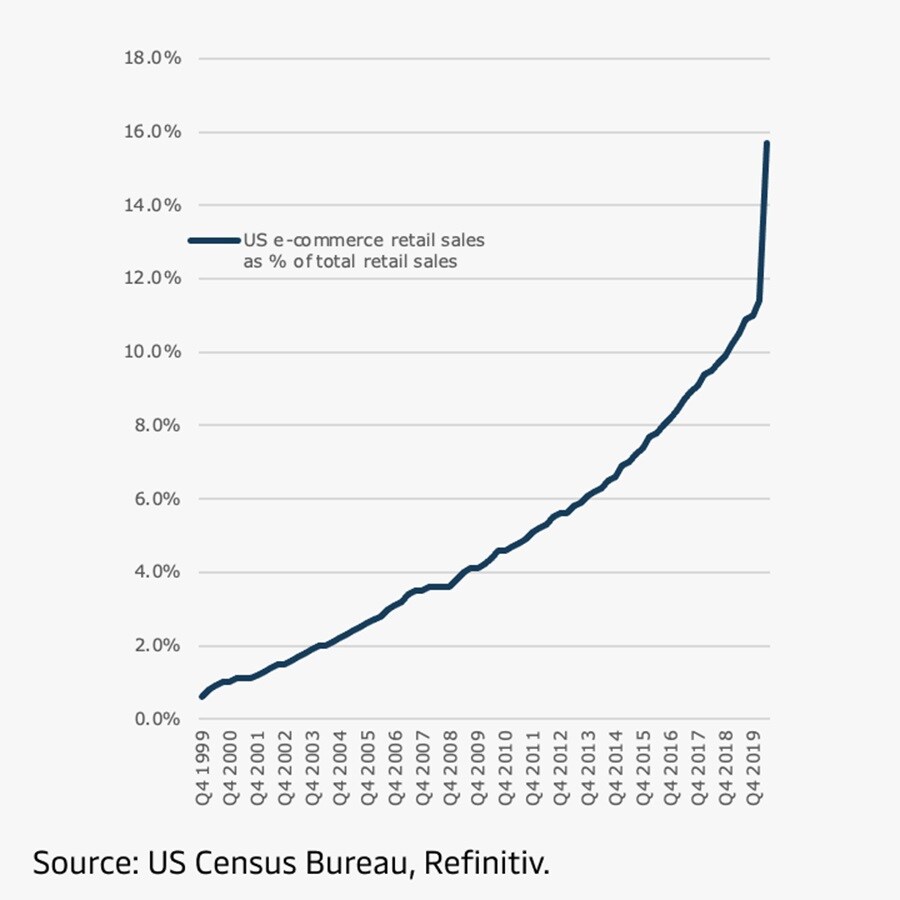How to Build a Customer-First Supply Chain

Supply chains are a defining factor in the success, or indeed, failure of any e-commerce business. That message was clear in my mind heading into Maersk’s recent ‘How to Build a Customer-First Supply Chain’ webinar, as we looked to use our platform and position to give practical advice for being on the right side of a slightly unnerving formula.
I had the pleasure of moderating the session, and was delighted to welcome Graham Slack, Chief Economist, Maersk; Dr Julian Dragendorf, Partner, McKinsey & Company, and Michael Skobierski, Manager, International Supply Chain and Projects, Desigual, as guest speakers to give real-world examples and identify the logistics of omnichannel excellence from Factory2Sofa.
Together, we tackled the most pressing issues of e-commerce logistics for 2022, and how focusing on the customer is crucial to enjoying omnichannel success – laying the foundations for attendees to take full control and scale up their supply chains over the next 12 months and beyond. Here are three key take-aways from the webinar.

E-commerce is booming, but balance is crucial
It was interesting to hear Graham discuss that despite the initial issues brought about by the Covid-19 pandemic, consumer spending has hit astronomical new highs and created an unprecedented demand shock – putting extraordinary strain on supply chains worldwide.
More goods volumes than ever are being moved, particularly within the FMCG, retail and technology verticals, all driven by global restrictions and changes in human behaviour. This level of goods consumption and the demand boom would not be possible without e-commerce.
As such, the penetration of e-commerce into the share of retail sales has spiked in remarkable fashion – growing almost 5% in just three months. In pre-pandemic times, such a rise would be expected to take approximately 10 years.
Forecasters expect demand to stay at a fairly high level during the course of the year, too, further penetrating the retail space by another 2-4%. And although analysis shows consumer spending is running dramatically ahead of income, this gap is expected to close and bring a welcome ease on supply chain pressures.
It goes to show that while there are undoubtedly massive opportunities with e-commerce, and still a large share of the retail sales space to penetrate, the need for a balanced omnichannel strategy has never been more important.
Businesses need flexibility, simplification, visibility, actionability and the right strategic partnerships in place to reap success. Digitalisation and visibility must be married with physical action, and choosing an able supply chain partner to take that action across multiple modes of transport – and indeed through warehousing – is crucial.
End-to-end customer-centricity is key
Logistics is becoming a major part of the brand experience for e-commerce consumers. As Julian emphasised, a significant 50% of the drivers behind consumer buying decisions are logistics related. Consumers highly value delivery control, cost and speed, product availability and whether there is a good return policy, on top of product quality and price.
Customer-centricity – from the order click all the way through to the delivery – is therefore paramount. Julian used a wonderful analogy to emphasise that each link is just as important as the last.
“The e-commerce value chain is like a string of pearls - only beautiful if nothing breaks from order click to delivery.”
So what does he consider as key levers for creating a customer-first, end-to-end supply chain?
Firstly, you need to think about optimising everything as a network, rather than focusing on just one customer or channel. At the same time, there cannot be a ‘one size fits all’ strategy, and the implications of every single consumer offering must be considered across the network.
A great deal of e-commerce warehousing is still done manually, bringing about a number of challenges with today’s market volumes. It’s why a clear warehousing automation strategy must be in place to meet the needs of the customer, for everything from cost, to the speed in which orders need to be fulfilled. Why greater flexibility in warehouse and distribution operations is so critical to omnichannel supply chain performance has also been elaborated in Reuters’ ‘Critical Factors That Support Omnichannel Supply Chain Performance’ white paper, here.
An end-to-end supply chain isn’t complete without the last mile; and as it’s arguably the most important touchpoint with the consumer, it’s one of the most crucial stages of the cycle. Intelligent last-mile integration is essential to provide customers with a good experience that motivates them towards repeat business and indeed referrals.
And at the heart of everything must be digitalisation and a strategic partner ecosystem. Digital enablement provides ultimate transparency and allows businesses to use data to optimise every aspect of the supply chain, both reactively and proactively, while strategic partnerships that put the customer’s interests first ensure operations are perfectly aligned.
With everything in place, the value chain string of pearls maintains its beauty.
Intelligent harmonisation of data can be a catalyst for growth
Closing the webinar was Michael Skobierski from Barcelona-based fashion brand Desigual, representing an impressive real-world example of what’s possible when adopting an omnichannel strategy.
Although a challenging time for fashion brands worldwide, the pandemic saw the likes of Desigual embrace digitalisation on a vastly accelerated timeline and push the boundaries of what’s possible with bolder business moves. These moves have undoubtedly paid off.
For Desigual, a data-based omnichannel approach comprehensively unlocks stock and provides fulfilment to customers from just about anywhere. Involving retail stores in product activation maximises availability and subsequent visibility worldwide, while the digital data makes for stock level accuracy of 99%.
Intelligent digital forecasting models also mean that Desigual can prepare for seasonal demand changes with precision – being able to move goods from central warehouses to local stores or vice versa before changes to demand occur, ultimately providing better overall service.
Digital benefits extend to the consumer, too. Thanks to a smart partnership strategy, the customer is able to choose their preferred courier for last-mile delivery on top of a more convenient, paperless returns system.
Such agility effectively means Desigual are making better use of their products, getting them in front of more and more eyes around the world to increase sales, and crucially, giving the customer a vastly enhanced experience.
It’s little wonder Desigual’s omnichannel operations are now catering to over 100 countries worldwide, with its multi-channel network increasing that figure to more than 250. And it’s safe to say the value of customer-centricity has played a major role in the brand’s success.
The knowledge, expertise and passion displayed by Graham, Julian and Michael certainly made ‘How to Build a Customer-First Supply Chain’ an insightful discussion. It’s clear that the opportunities in e-commerce are vast, but as our speakers emphasised, a number of intelligent strategies must be in place to take full advantage.
